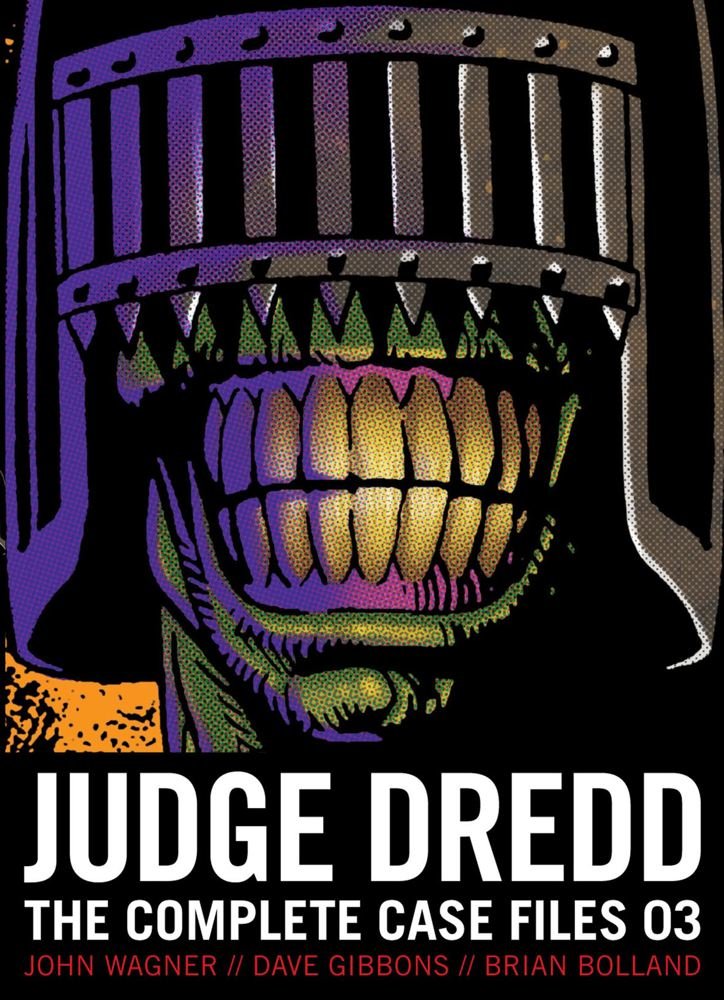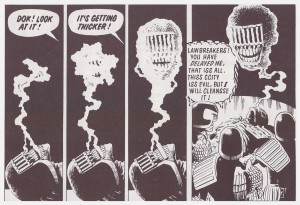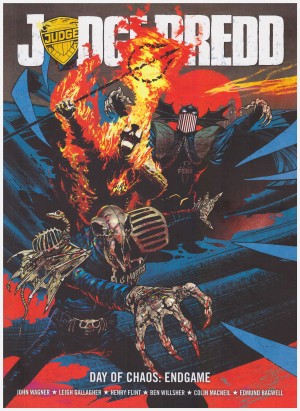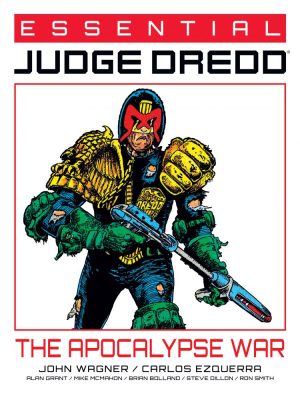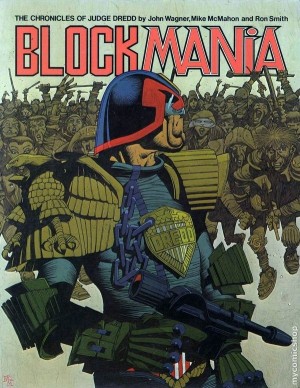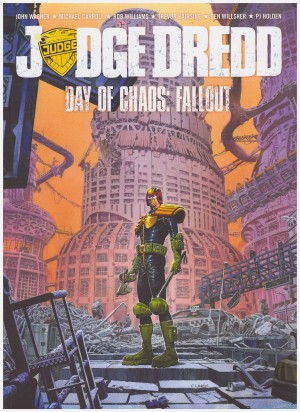Review by Frank Plowright
Given the way Judge Dredd’s continuity breaks down, this is a comparatively slim volume presenting the shorter stories compressed between two epics. As The Cursed Earth and The Day The Law Died had occupied over a year of publication, editorial edict demanded greater brevity, and the longest stories reprinted in this volume only run to four chapters.
John Wagner is again the primary writer, and the opener is both heartbreaker and conundrum with the welcome return of artist Ian Gibson’s distinctive style to Dredd. Throughout the stories here Wagner introduces themes and ideas that he’d mine again and again to great effect. The concept of the City Block housing tens of thousands, most of whom never leave the premises during their lifetime formed the basis for the more recent Dredd film. Otto Sump, the ugliest man in Mega-City One turns up, there’s the revelation of what lies beyond the sea shore, followed-up in the next volume, and in East-Meg there’s the ideological opposite of Mega-City One, although Wagner makes it clear it’s the same product re-packaged. Some ideas lacked that longevity, but the Aggro Dome where citizens work out their aggression, and Umpty Candy, so good it’s addictive, both deliver solid Mike McMahon illustrated stories. It’s Ron Smith who illustrates a good Pat Mills tale of the ghastly result of drinking dinosaur blood.
The best known work in this volume is the introduction of both Judge Death and Judge Anderson in a stunning three chapter tale drawn by Brian Bolland. Cassandra Anderson’s personality is the antithesis to Dredd’s dour intensity, an individuality permitted those with psychic ability. Created when Bolland pointed out the lack of female characters in Dredd’s world, she’d progress to her own series. Equally compelling was Judge Death, an undead alternate universe version of Dredd whose warped logic has concluded the only way to entirely eliminate crime is to wipe out all those with the potential to commit it.
Novelties include the only Judge Dredd strip from Dave Gibbons, a couple by football comics stalwart Barrie Mitchell, and a rare Garry Leach piece, while it’s interesting to see Brendan McCarthy before he’d fully flourished. The artistic workhorse, though is Ron Smith, exceptionally quick, a talented designer of memorable characters, and with the clearest storytelling style of all the early Dredd artists.
While the quality has increased again from Collected Case Files 2, the odd misfire still occurs, although thankfully Dredd’s robot servant Walter, ill-judged comedy relief, was on the way out. As ever, the pages originally printed in colour don’t reproduce well. Those preferring higher production values can look for older collections concentrating on just the Bolland stories, and most of the strips are available in the 1980s Titan published books collecting strips via artist.

